- Log in
-
- Sydney Overseas Office
- London Overseas Office
- Toronto Overseas Office
- Los Angeles Overseas Office
- New York Overseas Office
- Ulaanbaatar Overseas Office
- Dubai Overseas Office
- New Delhi Overseas Office
- Manila Overseas Office
- Jakarta Overseas Office
- Hanoi Overseas Office
- Kuala Lumpur Overseas Office
- Singapore Overseas Office
- Bangkok Overseas Office
- Map
- Sydney Overseas Office
- London Overseas Office
- Toronto Overseas Office
- Los Angeles Overseas Office
- New York Overseas Office
- Ulaanbaatar Overseas Office
- Dubai Overseas Office
- New Delhi Overseas Office
- Manila Overseas Office
- Jakarta Overseas Office
- Hanoi Overseas Office
- Kuala Lumpur Overseas Office
- Singapore Overseas Office
- Bangkok Overseas Office
Wellness Story
-
-
-
Geumpung Brewery
-
07/18/2024
702
-
0
1
-
-
wellness
-
-
-
Whispered Stories Brewed into Beauty: Geumpung Brewery
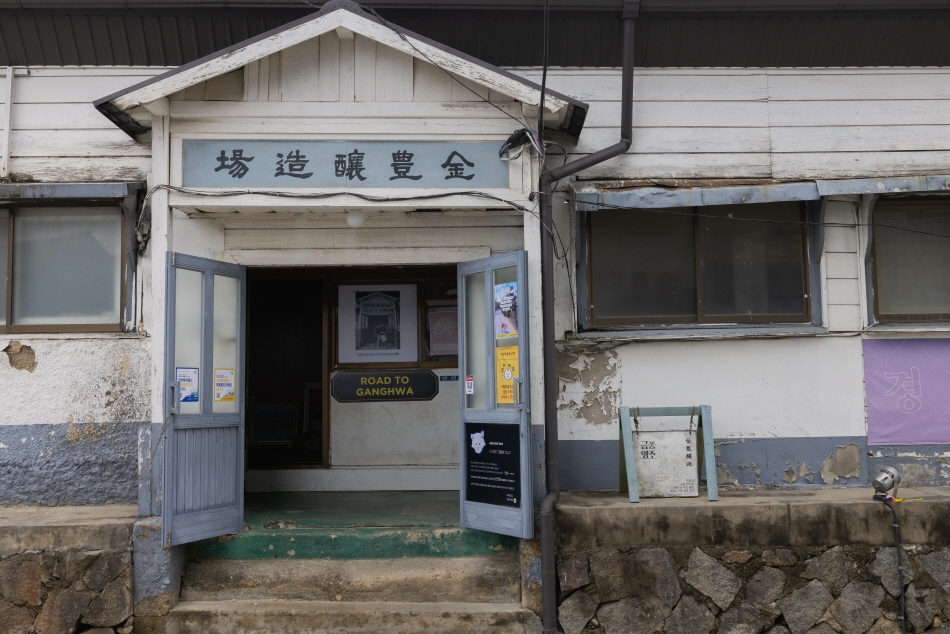
Gilsang-myeon, a neighborhood reputed to be full of good energy on Ganghwado Island, offers an abundance of sights. From the thousand-year history of Jeondeungsa Temple to Samnangseong Fortress, whose legend involves it being built by the sons of Korea’s mystical founder, and from Chojijin Fort to the Anglican Church in Onsu-ri, the area is rich with historical significance. Joining the ranks of these notable sites is the Geumpung Brewery. Established in 1931 for brewing makgeolli (unrefined rice wine), Geumpung Brewery boasts a long tradition. The story of the makgeolli brewed by three generations of its owners is unique, but what will propel the brewery into the next century is its interactive programs, aligning with modern travel trends.
A Cup of Makgeolli with a Helping of Ganghwa’s Flavors and Beauty
Standing beneath the Sino-Korean signboard, 金豊釀造場 (Geumpung Brewery), the worn wooden building with white paint tells the story of the brewery’s history. Dating back to 1931, the building was listed as a Registered Cultural Heritage of Incheon in 2022. It is the second brewery to be acclaimed as such in Korea, and the scent of liquor still permeates the old building, kept alive by three generations of its owners, from grandfather to father to son.
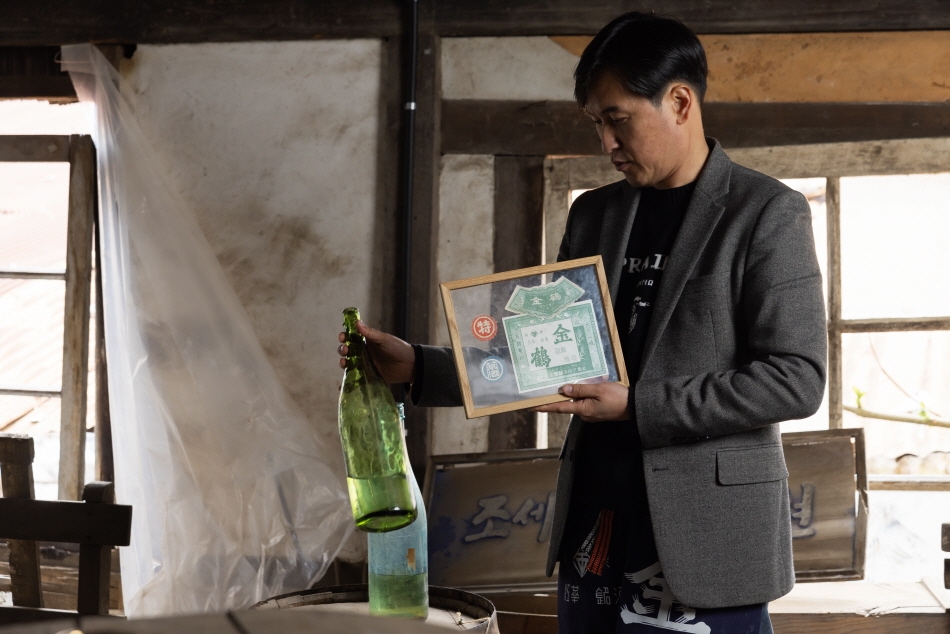
As a brewery, one must first speak about the flavors of its liquor. Geumpung Brewery’s makgeolli is brewed under the principle of “free from three”: free from pesticide, using only Ganghwa rice produced without pesticides; free from artificial flavoring; and free from excessive waste, through active participation in the island’s zero-waste campaign. The flavors born from the “free from three” principle evoke the makgeolli of old days. The brewing process typically makes or breaks the liquor’s flavors, and Geumpung Brewery’s makgeolli favors a creamy texture over sharp carbonation. The brewery offers four product lines: Geumpung Yangjo, Geumhak Takju Black, Geumhak Takju Green, and Geumhak Takju Gold. Each delivers qualities that bring back fond memories for some and the best of traditions for others.
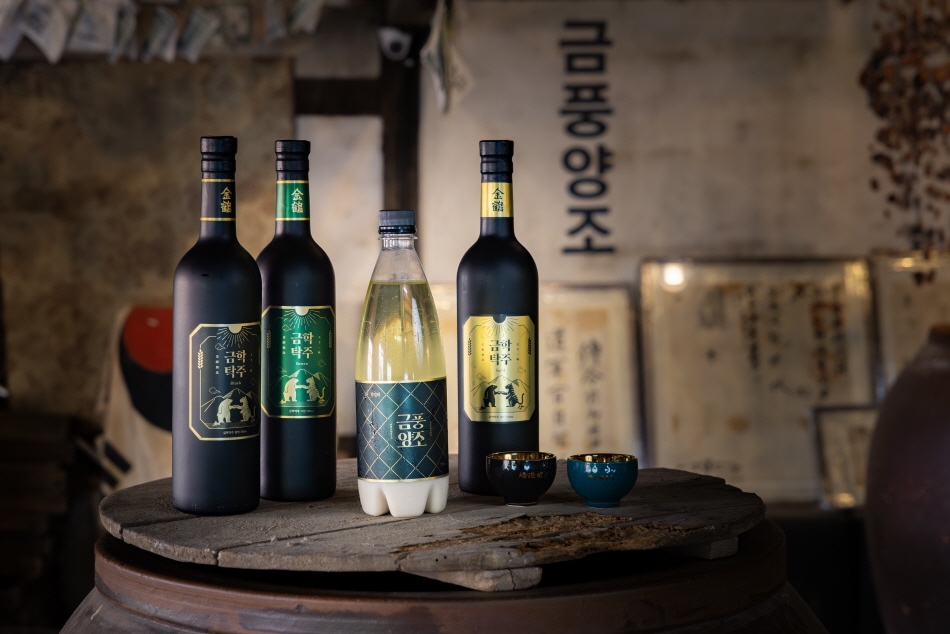
Brewing People’s Goodwill
Geumpung Brewery’s most renowned spot for photography is beneath its signboard, frequently seen on social media feeds. Climb the staircase to find the exhibition and sales space on the right-hand side. Lucky visitors may encounter the master of the brewery handing out fresh liquor for tasting. Geumpung Brewery’s merchandise lineup is curiously creative and stylishly sweet, from liquor to incense and candles made with brewer’s spent grains, to message cards and cups featuring the brewery’s design.
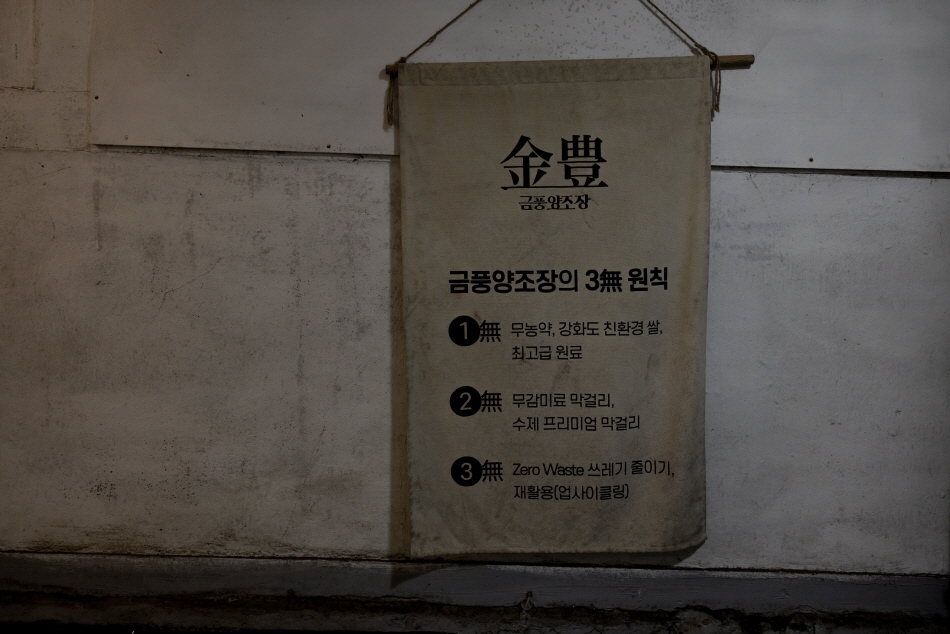
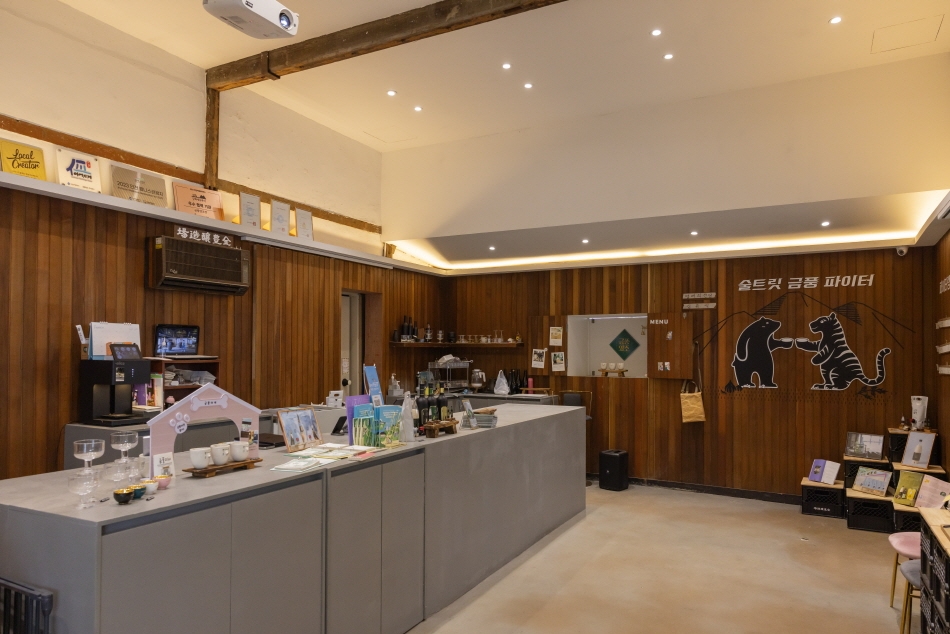
Further along, the passage leads into the hundred-year history of Geumpung Brewery, showcased in the yeast room and the old storage on the second floor. The yeast room, where nuruk (fermentation starter) is created for brewing, serves as the site of Geumpung Brewery’s latest project. This project involves restoration efforts using fungi obtained from this space to recreate the historical flavors of the liquor. Climbing the wooden staircase to the second floor transports one to the 1930s: massive jars that have stood the test of time, boards upon which brewing materials were placed, and a passage in the floor through which materials were sent down to the chamber, all tell the story of the brewery’s last hundred years. The yeast room and second-floor spaces will be opened to the public in the second half of 2024 after restoration works are completed.
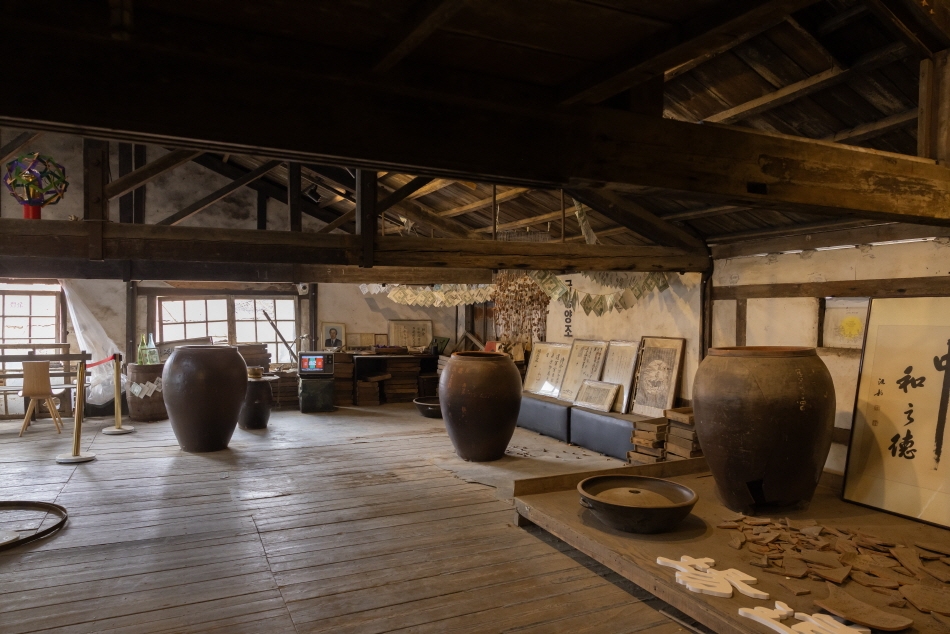
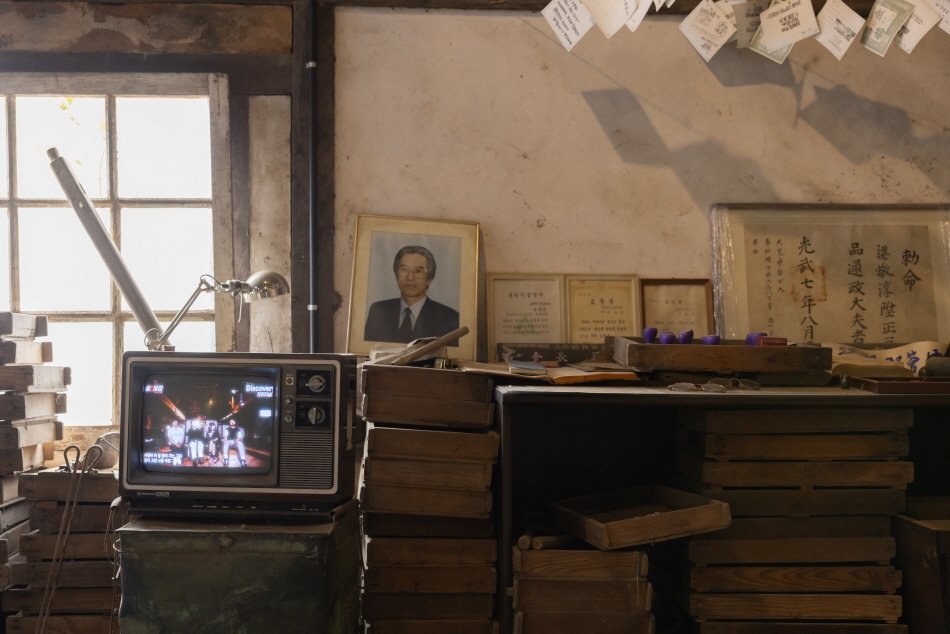
Activities that Turn the Brewery into a Playground
Geumpun Brewery is not only a space for brewing beverages but also a venue where visitors can enjoy a variety of activities centered around makgeolli. The primary attraction is the makgeolli brewing experience at “Pungdabang”, located in the innermost area on the right-hand side of the yeast room. This space accommodates both group and individual guests. After making a batch of makgeolli with a mixture of fermentation starter and steamed rice, participants can take their bottled creation home. Additionally, visitors can make azalea makgeolli in conjunction with the famous azaleas festival on the island. Other activities collaborate with local Ganghwa brands, such as the local bookstore “Seejum,” “Baeknyeon Haero”, which provides makgeolli bottles for a hundred marrying couples on the island, and “Onsu Yoga”, which combines yoga with makgeolli-related activities. Following the completion of the yeast room restoration in the latter half of 2024, the brewery also plans to offer free-style makgeolli-making experiences for visitors.
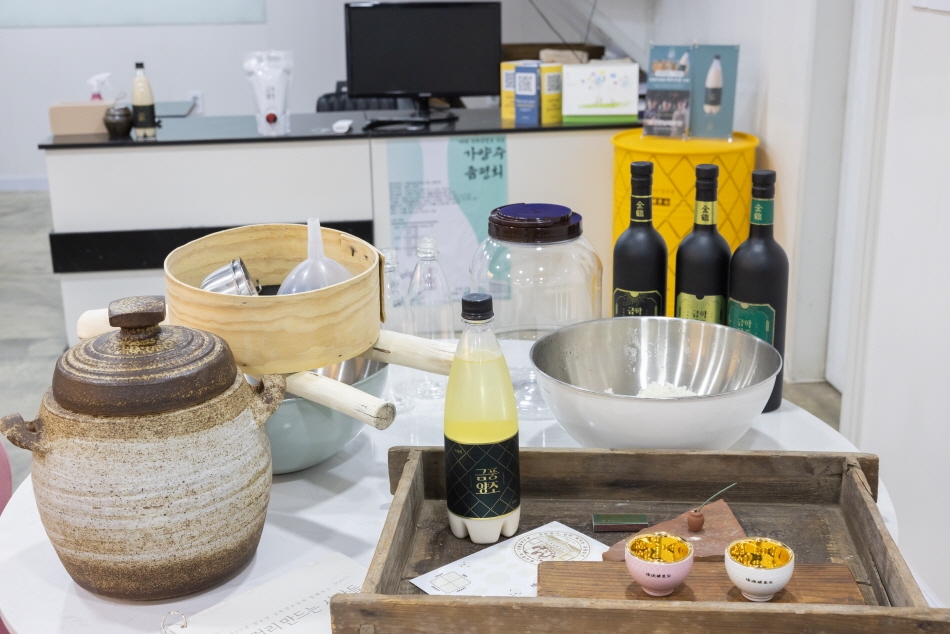
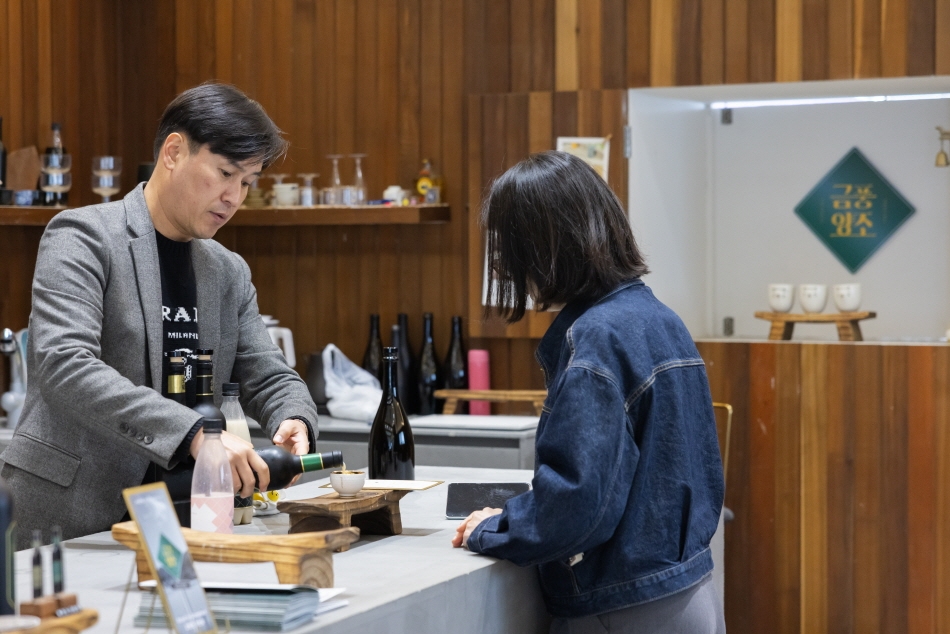
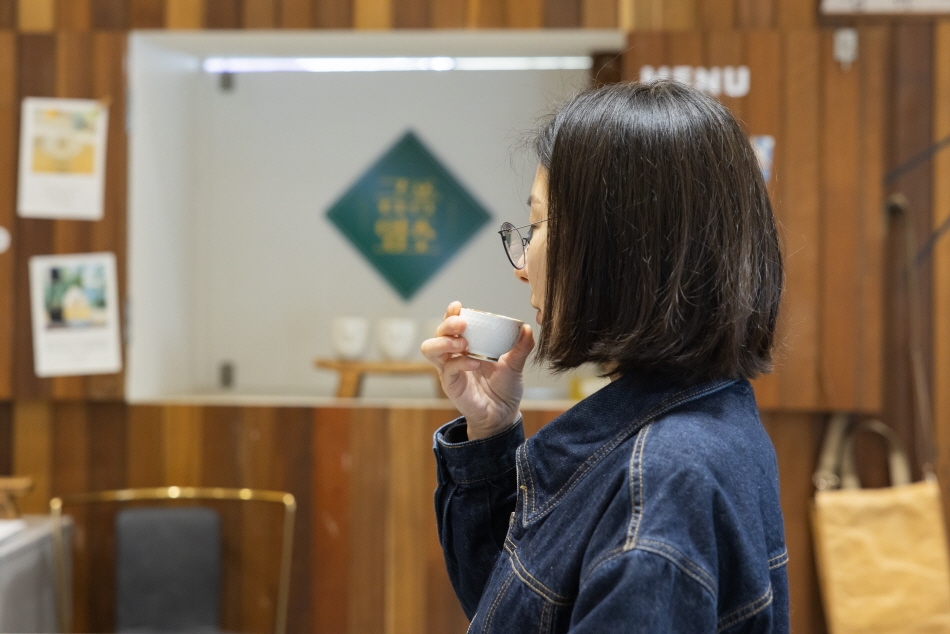
Wellness Program
Makgeolli-making experiences at Geumpung Brewery are divided into two-hour and one-hour programs. The program begins with makgeolli tasting, starting with the basic 6.9 Makgeolli and followed by Geumhak Takju Black, Geumhak Takju Green, and Geumhak Takju Gold. Geumhak Takju Green is notable for its bittersweet flavor, thanks to the inclusion of Ganghwa specialty ginseng. Next is the historical tour of the brewery, beginning on the second floor and ending in the first-floor exhibition hall, constituting the one-hour program. The two-hour program additionally includes makgeolli-making using DIY kits, culminating in bottling and labeling the makgeolli. For international visitors, who may find it difficult to take the completed makgeolli to their home country, the brewery offers DIY makgeolli-making kits. Makgeolli-making also includes hand masks using brewer’s spent grains and essential oil, which has been quite popular among ladies. The program concludes with a photograph taken in front of the Geumpung Brewery entrance. Geumpung Brewery’s makgeolli-making DIT kits will be released to the market in the second half of the year.
NOTE
-
Address
8 Samnangseong-gil, Gilsang-myeon, Ganghwa-gun, Incheon
-
Inquiries
+82-70-4400-1931
- Website
-
Opening Hours
Monday - Thursday 12:00–17:30, Friday - Saturday 11:00–17:30, closed Sundays
-
Fees
One-hour makgeolli-making workshop KRW 20,000, Two-hour workshop KRW 50,000
[Recommended Tourist Sites]
The Oldest Buddhist Temple in Korea: Jeondeungsa Temple
Ganghwado Island’s Jeondeungsa Temple is the oldest Buddhist temple in Korea, founded in 381 CE, the 11th year of King Sosurim of Goguryeo. After passing the ticket office at the south gate, one first finds two 500-year-old ginkgo trees. Visitors can follow the path, lined with historic trees, to reach the temple. The temple complex is full of sights, including the Daeungbojeon Hall, one of the most esteemed mid-Joseon-era buildings; the Wooden Seated Sakyamuni Buddha Triad of Jeondeungsa Temple, designated as a Treasure; Yaksajeon Hall; and the Dharma bell. Another great idea is to stop by the traditional tearoom “Solbaram” in the temple complex for a cup of traditional tea. Jeondeungsa Temple is also famous for its Templestay program, which is divided into experience and rest programs.
NOTE
-
Address
37-41 Jeondeungsa-ro, Gilsang-myeon, Ganghwa-gun, Incheon
-
Inquiries
+82-32-937-0125
- Website
Become One with the Wind at Ganghwa Luge (Ganghwa Seaside Resort)
Ganghwa Seaside Resort, located at the top of Gilsangsan Mountain’s 374m-high peak, offers a unique activity for visitors: an exciting ride down the curved road on a luge, an otherwise winter sport. Visitors take a cable car to the summit, which also offers a great view of Gilsangsan Mountain and the lake from above. There are two routes in total. The first, the Valley Course, is characterized by a steep incline and curved tracks, while the second, the Ocean Course, is a gentle ride along the sea-facing trail. Riders need to be above 85cm in height and under the age of 65, making it a great family destination. Another must-visit site is the 360° rotating observation platform.
NOTE
-
Address
217 Jangheung-ro, Gilsang-myeon, Ganghwa-gun, Incheon
-
Inquiries
+82-32-930-9000
- Website
-
Address
-







 Medical Wellness
Medical Wellness